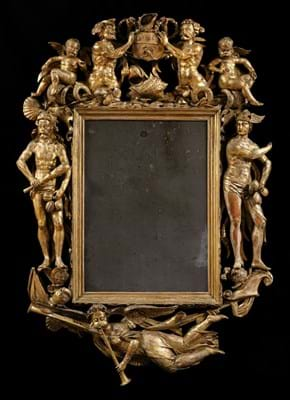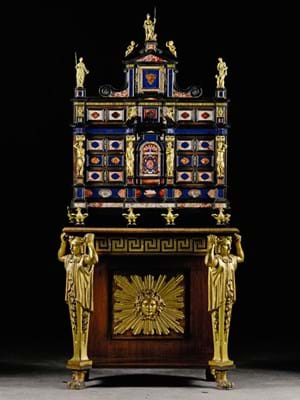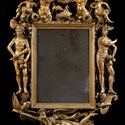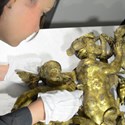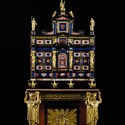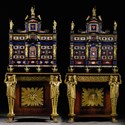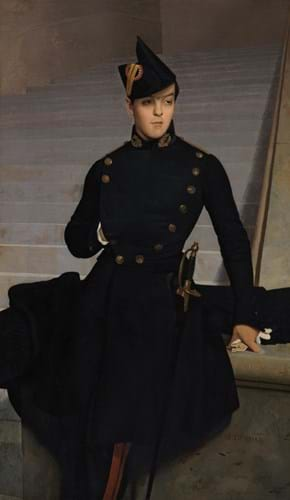
A dramatic full-length 'swagger-portrait', the work depicts the artists’ brother Claude-Armand Gérôme (1827-50).
It is believed Katz bought the painting at a French auction in 2013 and Fitzwilliam paid £920,000 for the work that has been placed in its Impressionist Gallery.
The purchase was part of a £2.5m investment programme by the Cambridge museum following significant fundraising in its bicentenary year in 2016 which included three standout items.
The museum chose to buy the Gérôme painting because of Cambridge’s connection to education – it depicts Gérôme’s brother as a student at the time of his graduation in his uniform from the Ecole Polytechnique in Paris, a prestigious school of higher education founded in 1794. The Fitzwilliam said that although Gérôme is “one of the most important French painters of the 19th century… his work is only represented in six British public collections to date”.
The painting, from the early part of his career, is a very personal work for the artist. Exhibited at the 1848 Salon in Paris, the portrait earned Gérôme a Second Class medal, helping to consolidate his standing as one of the foremost artists of his time. The story ends in sadness as his brother Claude-Armand would tragically die of meningitis two years later. The painting stayed in Gérôme’s possession until he died in 1904.
More recently it was thought lost, until its reappearance at the auction in France.
The Fitzwilliam described the picture as a “virtuoso example of his skills as a portraitist”.
It funded the purchase with a number of donations from funds and trusts including the Art Fund.
It will celebrate its acquisition with an event on June 30, with a lecture from Edouard Papet, a Gérôme expert and Musée d’Orsay’s senior curator for sculpture.
The museum’s other purchases during the past year included paying £1.24m for a 17th century Roman pietre dure cabinet, one of a pair from the estate of Castle Howard Yorkshire, that the museum saved for the nation after an export bar was placed on them.
It was also able to raise £345,000 for Admiral Russell's carved giltwood mirror frame. It was bought by dealer Carlton Hobbs in France and sold on to the museum. It is thought to have come from a home in the Loire Valley.
The £2.5m of purchases were part of a significant fundraising period for the museum, from donations from the public, funds and trusts including the Art Fund.


